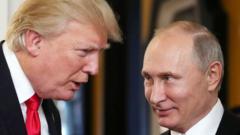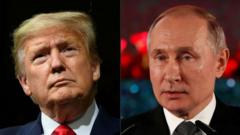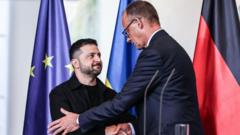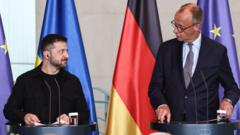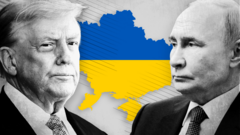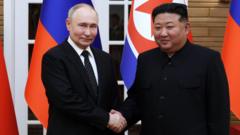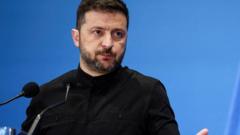This article explores Trump's vision for international relations and his ambitions to assert American dominance in key regions.
Trump's Global Strategy: A Triad of Power Dynamics

Trump's Global Strategy: A Triad of Power Dynamics
President Trump's recent geopolitical moves hint at a world order defined by the influence of the U.S., China, and Russia.
In a series of recent actions and statements, President Trump is positioning himself amid a complex international landscape where he envisions a world dominated by three major powers: the United States, China, and Russia. As geopolitical tensions escalate, Trump is placing a greater emphasis on striking deals, particularly with leaders in both Beijing and Moscow, potentially reshaping their spheres of influence.
Reflecting this approach, Trump publicly advocated for normalization of trade relations with Russia while downplaying immediate pressures for Moscow to resolve its conflict with Ukraine. In an interview with Time magazine, he remarked, "We all want to make deals... I’m this giant store. It’s a giant, beautiful store, and everybody wants to go shopping there," hinting at his broader ambitions.
Experts observing this strategy speculate that Trump might envision a return to a power dynamic reminiscent of 19th-century imperialism, where each superpower controls specific geographic regions. His recent suggestions, such as acquiring Greenland or reclaiming the Panama Canal, underscore a newfound focus on expanding U.S. influence within the Western Hemisphere.
In these aspirations, analysts suggest that Trump’s maneuvers signal an attempt not only to exert American power abroad but also to stake claims in areas traditionally influenced by other powers. As Trump's foreign policy evolves, it raises questions about how the balance of power in global politics might look in an era defined by these "great powers," each vying for dominance in their respective territories.




